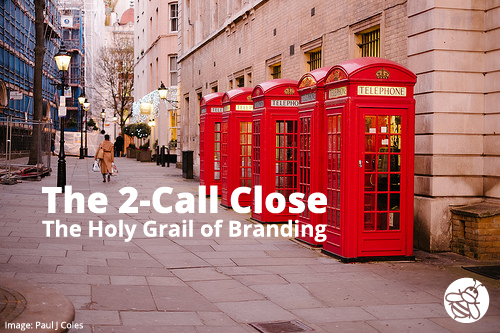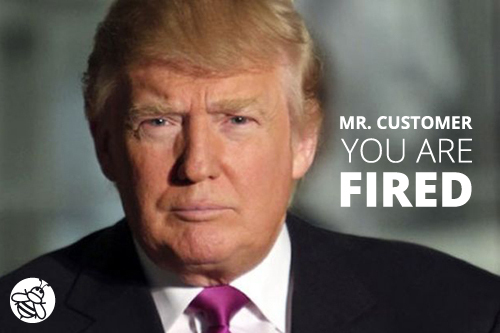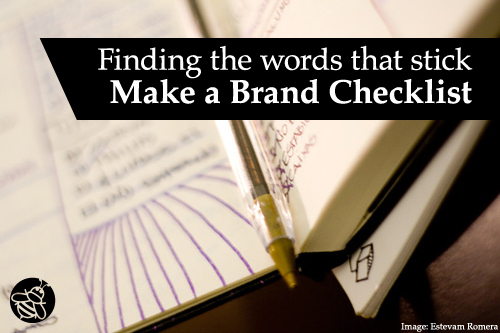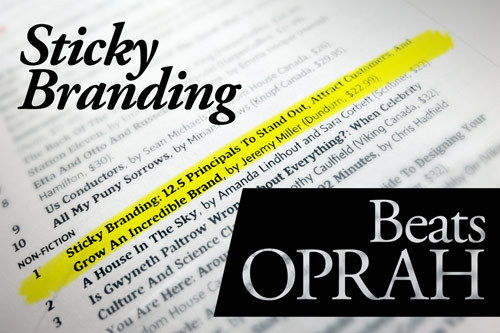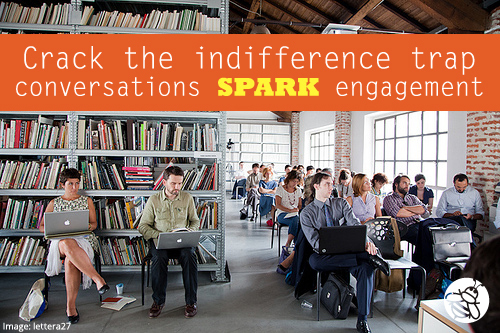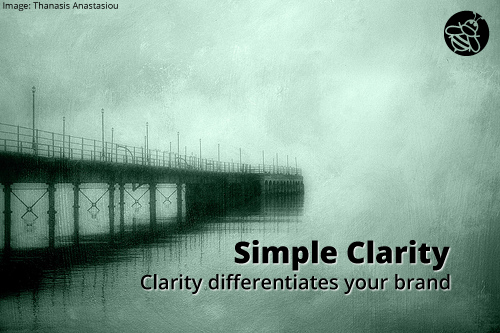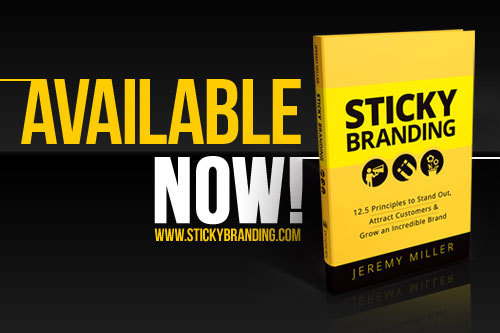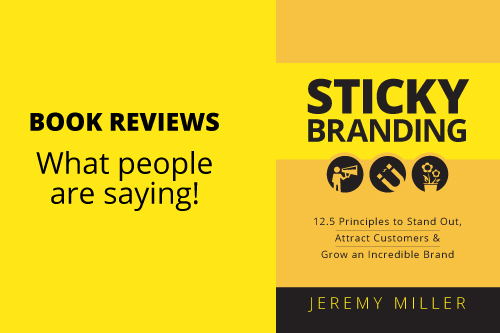Jeremy Miller's Blog, page 40
February 5, 2015
The 2-Call Close, Part 1
Can you close a sales opportunity in two calls?
Now, I’m not talking about a small, transactional sale like office products. Can you sell a complex deal — $10,000 to $75,000 solution — in two calls?
To me this is the holy grail of branding, and it’s what I like to call the “2-Call Close.” It’s the ability to package your services so well that a salesperson’s only job is to facilitate the buying process.
The first call sets the stage. It qualifies if the prospect is a fit for your services, demonstrates your firm’s capabilities, and sets the customer up to agree to move forward with a service agreement. Following the call the sales rep submits a service agreement or contract. Note I am not saying a “proposal.” This is important and we’ll come back to it later.
The second call is a closing call. The sales rep will review the agreement with the customer, answer any questions, negotiate any sticking points, and gain consensus to move forward.
That’s it. That’s the sales cycle. And it can be conducted in the course of two to three weeks. That’s the holy grail of branding.
In this three part series I will discuss what is involved with setting your brand up for a 2-Call Close. We will cover the following:
Part 1: Deliver Contracts Not Proposals
Part 2: Websites That Sell
Part 3: Experts Close Deals
These posts will be a little meatier than my average posts, but I believe this topic is very important. It will also give you a glimpse into how I discovered some of the Principles of Sticky Branding, as well as deliver actionable ideas you can apply in your business.
Part 1: Deliver Contracts Not Proposals
Achieving a 2-Call Close is all about driving velocity into your sales funnel.
I first came onto this idea in the mid-2000’s while developing the LEAPJob brand. In 2004 our sales team had to work hard to close a deal. The average sales cycle was between 60 to 120 days, and involved several phone and face-to-face meetings.
Every sale cycle included a discovery meeting, an on-site presentation of our firm’s capabilities, a proposal followed by a contract, a negotiation, and finally an agreement.
It was an arduous process, but it was our normal. We’d been selling that way since 1989, and we were good at it.
But in 2006 I heard the Vice President of Sales at WebEx speak at a conference. He shared with the audience how his team had reduced their sales cycle from 180 days to 21 days, and he talked about all the steps they removed from the sales process to compress the sales cycle.
I was hooked. I wanted that for LEAPJob. This became our Big Goal, our Whale. We challenged ourselves to try and reduce our sales cycle to two calls over two weeks.
Proposals Slow Down Sales
When we studied our sales process we realized the most time consuming part of our sales cycle was the proposal. Proposals took a lot of time to write and deliver, and many times our clients didn’t even read them.
Proposals are ubiquitous in business, but they are evil. They slow everything down.
Customers and salespeople can hide behind them. It doesn’t cost a customer anything to say, “Send me a proposal.” And the salesperson thinks he’s done a good job, and scurries back to his desk to write a thirty page document.
What’s missing is two ingredients:
Simple Clarity: When a salesperson can’t clearly articulate what they sell, who it’s for, and what problems or issues they solve, they have to use a proposal. A proposal is a sales crutch for a poorly defined product or service.
Weak Qualification: Customers don’t like to say “no.” It’s uncomfortable. So they ask for a proposal to delay the inevitable. An effective sales process builds off Simple Clarity, and gives the salesperson the questions and indicators to qualify if a customer is a fit for the service. And if the sales rep discovers the customer isn’t a fit, they can quickly shut down the sales process and focus on more appropriate customers.
Treat proposals as a sales crutch, and ask do you really need them?
Skip the Proposal, Offer a Contract
Instead of presenting a proposal, offer your customer a service agreement. You will know right away if a customers is interested in buying when you present a contract.
A contract has very different implications than a proposal. It means you’ve come to an understanding with your client. You understand their needs, and they understand what your firm will offer, how the service works, what they will receive, and what it costs.
There are no surprises. The contract simply states the facts:
Price
Deliverables
Terms of service
There are no benefit statements or value propositions in a contract. It only presents the cold hard reality of your services.
If a customer isn’t ready to receive a contract, they are not ready to receive a proposal either. And this can mean several things:
The customer doesn’t understand what your firm does and what it will deliver.
The customer has doubts in your firm’s capabilities.
The customer isn’t ready to buy, and may be leaning towards another option.
Wouldn’t you rather know the customer has doubts and tackle those head on versus writing a proposal?
Three Steps to Eliminate Proposals
I will be the first to tell you eliminating proposals is easier said than done. And there are cases where you simply cannot eliminate the proposal entirely, because they are baked into an industry’s buying process. For example, government agencies require suppliers to submit detailed proposals.
But that doesn’t mean you can’t streamline your sales process to the point where the proposal is a necessary evil, but has little influence on the sales outcome.
Eliminating proposals from your sales methodology requires three things to happen first:
1. Position To Win: If you want velocity in your sales funnel you have to position your brand to win. This means clearly defining your target customer, their needs, and how you serve them. Your brand cannot be all things to all people. You can’t be endlessly customizing your services to fit any need. You’ve got to clearly define who your company serves, how you deliver value, and who isn’t a fit.
2. Package Your Services: Make your services really easy to understand and buy. Instead of writing a proposal, you should be able to direct a customer to your website or send them a brochure that gives them that information. That’s the proposal. Your website should be telling the same story your salespeople are conveying, and speak with absolute authority of what your firm delivers, how the service works, and address any question or objection head on.
3. Simple Clarity: Simple Clarity is the ability to describe your business, products, and services in simple, concise language. There should be no confusion about what your company does, who it serves, and how it delivers value. And your customers should know those statements before they even speak with a salesperson.
Eliminating Proposals is Strategic
Your sales team cannot eliminate proposals from the sales cycle. This topic is above their pay grade. It’s a structural project. It’s a branding project.
Creating the conditions for a 2-Call Close is a leadership project. It takes defining your market, developing Simple Clarity, eliminating fluff from your services, and honing your brand to do one or two things really, really well.
What’s Next?
In Part 2 and 3 of this series we will go deeper into the marketing, and what’s required to create the conditions for a 2-Call Close.
In Part 2 I address the concept of “Websites That Sell.” This is the goal to make your website sell as well as your best salesperson. Let your salespeople work with customers that have a need and will make a buying decision, and let your website do the prospecting and relationship building.
In Part 3 I tackle the talent equation. Sales talent is integral to the 2-Call Close. Weak salespeople cannot do what I am calling for. This sales process is efficient, focused, and requires expertise. A socializer or a rookie can’t do a 2-Call Close.
And please, share your comments or ask questions. This is a rich, meaty topic. I am happy to tackle it further with you in the comments of this post.
February 3, 2015
Freely Fire Bad Customers
It’s ok to fire bad customers. Actually, it’s great to fire bad customers.
Bad customers are holding you back. They’re sucking the life out of your company. They’re preventing you and your team from doing great work for great customers. They are hurting your brand.
Don’t let this happen. Fire them!
You’ll be so glad you did.
Bad Customers Are Time Vampires
Bad customers cause nothing but grief.
They’re not only time sucks, they are productivity and energy drains. They drain you and your team of your precious resources and prevent you from accomplishing your goals.
Bad customers are time vampires.
You try to please them. You try to do your best work, and you put your best people on the case. But it doesn’t matter.
Get rid of these vampires, or they will drain you until you’ve got nothing left to give.
Golden Handcuffs Are Still Handcuffs
Firing customers is counterintuitive, especially when they are big customers.
A customer may generate a lot of revenue for your firm, but that doesn’t make it profitable or beneficial for your business. These bad customers are tolerated because they are big.
Golden handcuffs are no reason to keep a bad customer. They are still shackling your company and holding it back.
Fire them!
Know the Signs of a Bad Customer
There are definite warning signs it’s time to fire a customer:
Contrary values: The customer’s values are contrary with your company and its values. There is an inherent gap between your two worlds. You will never be able to bridge this gap. Get rid of customers that don’t share your values.
Rude to your people: Customers who treat your team like garbage need to go. Rude and unprofessional behavior does not need to be tolerated. You wouldn’t accept this behavior from a staff member, you don’t have to accept it from a customer.
Never ending requests: Sometimes you have accounts that just keep taking and taking. They’re not interested in a win-win relationship. They’re only interested in themselves. If these customers are no longer profitable or desirable, fire them.
These are some of the obvious signs, but you will intuitively know you’ve got a bad customer.
One of my early detection signs is when I am stewing endlessly on one client. If I find I am venting and holding onto a bad customer night and day, and it’s conflicting with my personal life, I know I need to act.
Find your early detection system so you can get rid of bad customers before they become a problem.
Fire Humanely
As much fun as it would be to put on a Donald Trump wig and say, “You’re fired!”, don’t do it.
The business world is a small world. It’s never wise to burn bridges or behave badly.
Give your bad customers a way out. Refer them to another option. Give them terms so they can transition their business smoothly. Do what is right to terminate the relationship cleanly and reasonably.
“Sell fast, fire fast.”
Hiring Managers have a great saying, “Hire slow, fire fast.” And the idea can be adapted to your business.
Ok, selling slow is dumb. You want and need velocity in your sales funnel, but you also need the ability to eject customers that don’t fit. “Sell fast, fire fast.”
There’s no reason to hold onto a bad customer. Get rid of them as quickly as you can.
Sticky Brands are not one size fits all brands. They are clear about who they serve and how they deliver value. And if you ever get a customer that’s not the right fit, it’s perfectly fine to terminate the relationship so you can focus on the right customers.
January 29, 2015
Finding the Words That Stick: Make a Brand Checklist
Nothing will accelerate your brand more than achieving Simple Clarity. This is the ability to describe your business (or products) and what makes it unique in ten words or less.
When you achieve Simple Clarity it makes your brand easier to remember, easier to refer, and easier to talk about. And it gives your brand credibility, because you can speak about it with authority.
But finding Simple Clarity can be elusive.
I have wrestled with finding Simple Clarity in every company and service I’ve launched. And more than a third of the companies that engage Sticky Branding for consulting services are wrestling with Simple Clarity too.
We all know how important it is to use the right words to position and talk about our brands, but finding the words that stick can be a monumental challenge.
Build a Brand Checklist
If you’re struggling to find the words that stick, try this exercise. Create a short checklist to describe your brand.
This is a tool I am using with several of my clients that sell complex products and services. Rather than developing a ”Googleable phrase” to describe their brand, we’re using three questions.
For example, Shift Coaching is a mid-sized coaching firm. It works with large companies, and provides leadership development programs for individuals and teams. The firm goes toe-to-toe with giants in its industry, but has refined expertise in helping companies shift their cultures.
To focus Shift Coaching’s sales team and to refine its core messaging, we are using a Brand Checklist. In every customer interaction the sales team is asking three questions:
Are you looking for leadership development and coaching services?
Does your company (or division) have between 200 to 2,000 employees?
Is your business going through a transformation?
The first two questions are designed to qualify the account. The first question frames the firm’s category: coaching and leadership development. The second question qualifies the minimum size of account that could benefit from the range of programs the firm offers.
The third question focuses on the need: cultural transformation. The sales reps will ask the question in different ways, but the goal is to discover if the prospect is going through a transition of some kind: merger, responding to a new competitive threat, launching a new service, or some other force.
Instead of spending a lot of time to find that one perfect phrase, they are getting out into the real world and having purposeful conversations right away.
Just the Facts
The Brand Checklist is a very effective tool because it focuses on the facts.
The questions strip away all the benefit statements and ”why you need us” kind of language, and just focuses in on the customer:
Category: Do you need this type of expertise or product?
Qualification: Is the customer a fit for your company?
Need: Will your firm deliver a demonstrable impact in this business?
The faster you can get to the facts, the faster you can have a meaningful conversation with the prospect. You can talk with each other versus selling at them.
Practical Questions Lead To Simple Clarity
The more you use a Brand Checklist the easier it is to find Simple Clarity, because it focuses you on having more practical conversations.
Simple Clarity is void of marketing hype. It doesn’t have any jargon or buzz words. It’s stripped of outlandish benefit statements. It’s just a simple and clear description, like a label on a file folder.
Straight up, practical questions will help you find the words that stick, because you will use them over and over again in your conversations. Your questions will lead to predictable responses, and that will help you pull them together into one, succinct statement.
Finding Simple Clarity is a process. You don’t need to get to a perfect statement on day one. Start with the questions first, and Simple Clarity will follow naturally.
January 27, 2015
Sticky Branding Beats Oprah
On Saturday morning I woke up to my phone ringing. In a groggy, incoherent state I got an ear full of news, “Jeremy, Sticky Branding is number one on the Globe and Mail Bestsellers List!”
That woke me up.
Not only did Sticky Branding make the list, it is at the top. Sticky Branding is #2 in non-fiction and #1 in Canadian non-fiction on the Globe and Mail Bestsellers List.
The book out sold heavyweights like Lena Dunham, Chris Hadfield, and Oprah Winfrey.
Sticky Branding beat Oprah! (Does that mean I can retire now?)
Yes yes, there are some blah, blah details. Oprah has been on the bestsellers list for 17 weeks in a row, and she has probably sold millions of copies of her book, What I Know For Sure. But what I know for sure is we beat Oprah this week. 
Boom! (Yeah, I’m just a wee bit giddy over this news.)
Driven by Passion
This weekend’s news is an ideal segue into a topic I’ve been planning to write about for a few weeks: passion.
There is nothing more intoxicating than selling a product or service that you are passionate about. It fuels you. It motivates you. It pushes you to fight and win.
That’s exactly how I’ve been feeling while marketing Sticky Branding. I believe in this book, I am excited to sell it, and I am even more excited for people to read it.
To that end, I am more than happy to pitch, pitch, pitch, and pitch. Actually, the challenge I am facing is governing myself, because I’d love to pitch even more.
This is the power of passion. When you believe deeply in your brand and what you’re selling, there’s nothing that can stop you. You will outperform all expectations because you’re driven to win.
The Dark Side of Passion
As potent as passion is for your business, it has a dark side. For example, whenever I faced a bump in the road in writing and marketing Sticky Branding, I fought like nothing else mattered.
This book has become my baby — it took nine months to birth, I mean write. And I’ve taken every issue personally, which is not ideal.
Passion leads to results, but it also has to be managed.
I have learned to rely on and trust my advisors. They’ve kept me from completely flying off the handle, and saying or doing something I would regret later. They’ve also helped me see situations strategically, and provided me the tools and perspective to negotiate and win.
(Notice I keep saying “win.” Passion drives you to win. If you’re finding yourself compromising to get a result, you may not be truly passionate about what you’re doing.)
When the desire to fight is ignited you need trusted advisors who will help you manage the situation. You need them to be able to call you an asshole, and you need to listen to them.
Passion will flood your system with emotions and adrenaline, and your trusted advisors will help you stay focused on what’s most important — the success of your project.
Get Fired Up
I’ve never felt this way about any product or service I’ve sold. I always understood that passion is a motivator, but I didn’t realize just how powerful it is until now.
And here’s the thing, you can become passionate about what you are selling and marketing. It’s a choice.
Do you believe in your brand? Not just “believe,” but truly believe at a deep, emotional state?
Do you want to succeed? Do you want to win?
Do you want to deliver real, exceptional value to your customers?
Do you take pride in your work? Do you have the kind of pride where no compromise is acceptable?
This isn’t easy to find. But if you can find it — wow. Watch out. You will achieve things you never thought possible.
Harness that power. Harness your passion to win!
January 22, 2015
Conversations Spark Brand Engagement
It’s easy to ignore companies that don’t engage with you, but it’s hard to ignore a conversation.
Conversations are the secret weapon of Sticky Brands, because a conversation is a two-way dialogue to share ideas and opinions. And that spark of engagement can shatter the trap of indifference that so many companies fall into.
The conversation pushes the brand from just being another company that talks at its customers, to a brand that’s engaged in its community and the people within it.
Not All Conversations Are Equal
Conversations build relationships, demonstrate your firm’s expertise, and generate top-of-mind awareness. They are a powerful method of pulling your brand out of the indifference trap.
But not all conversations are equal — as I discuss in my book Sticky Branding.
For a conversation to support and grow your brand, it has to be linked to a Brand Storyline. Muldoon’s Coffee, for example, engages its market with a Brand Storyline, “Why go out for coffee?”
Shaun Muldoon, CEO of Muldoon’s, says, “An average employee spends over 125 hours a year going out for coffee. That’s six percent of the employee’s salary, or three weeks of vacation.”
Muldoon’s has shifted a key benefit of their service, taste, into a Brand Storyline. And by stating, “Six percent of your payroll is walking out the door for coffee,” engages their market in a conversation.
It’s a surprising statistic, and it catches business owners and CFOs’ attention right away. It gets them to say, “That’s interesting. Tell me more.”
Three elements of a Brand Storyline
Brand Storylines are unique because they are not just conversations about the weather or sports, and they are not one sided pitches promoting your brand. They are conversations crafted to engage your marketplace and keep your brand top of mind.
Brand Storylines are effective marketing tools, because they are crafted to connect conversations to your brand.
A Brand Storyline has three fundamental elements:
Expertise: It’s a topic you and your team know well, and draws from your company’s core expertise.
Strong Opinions: It’s a topic your company is passionate about. You can take a stance and boldly share your opinions.
Point of Sharing: The topic resonates with your target market, and encourages others to participate in the conversation.
The three elements function as a three-legged stool. If any one of them is missing, the Brand Storyline is unsustainable.
For example, Strong Opinions without Expertise is a rant. Expertise without Strong Opinions is boring. And without a Point of Sharing you’re talking to yourself.
Wrap your content in Brand Storylines
What conversations can your company spark in its marketplace?
Look for two to three topics where your company has Expertise, Strong Opinions, and a Point of Sharing, and craft them into a Brand Storyline.
Once you have packaged the storyline, push it through your social media channels to see which topics resonate with your customers and which ones fizzle and die off. The ones that resonate are the storylines to hold onto.
When you have one to three effective Brand Storylines, you will have an opportunity to engage your marketplace in conversation. You will push through the indifference trap, and have a reason to engage with your customers in a meaningful way.
What storylines will you lead with?
January 20, 2015
Never Underestimate a Sticky Brand
The booksellers underestimated us. Sticky Branding (the book) launched worldwide last week, and promptly sold out.
I couldn’t believe it. This is an incredible milestone, especially since this is my first traditionally published book.
As happy as I am with the response to the book, this has led to a problem. What if you want to read Sticky Branding right now?
That’s what today’s post is all about. I have a special offer for you.
It took some negotiating and pleading, but I convinced my publisher to offer you an incredible discount. For the next four weeks you can get the Sticky Branding ebook for $1.99!
That’s an 83% discount. And the promotion is available on all devices: Kindle, Nook, Kobo, and iBooks.
Reward the community
This promotion is for you.
The success of the book launch has a lot to do with you and the Sticky Branding community. Thank you!
In addition to the $1.99 ebook promotion, when you buy a copy (or copies) of Sticky Branding before January 31, 2015 you’ll get the Sticky Branding Workbook for free!
The workbook is a companion guide for the book, and provides additional tools and resources to use along with the exercises at the end of each Principle.
To receive your free Sticky Branding Workbook just email a copy of your receipt to workbook@stickybranding.com.
How we did it
Here’s the other observation. The approach we have taken for the book launch came directly from the Principles in the book. I am following my own playbook:
If you don’t blow your own horn, nobody will. There is a buzz about the book, because we’re doing a good job getting the word out.
Build a community. We began building the Sticky Branding community in 2010, five years before this book launch. And the community has been the platform for how we are generating so much response so quickly.
Proud to serve. I am passionate about this book, and I am proud to sell it. And to see the reviews reinforces the value in the product. It’s easy to sell a product that you are passionate about.
This stuff works 
Thank you for your support! I can’t wait to hear what you think of the book.
January 15, 2015
If You Don’t Blow Your Own Horn, Nobody Will
Sticky Brands are outstanding marketers. They use all the tools at their disposal to make their brand highly visible — they make their brands appear to be everywhere.
To research my new book, Sticky Branding, I interviewed over 150 CEOs and business owners to understand how they make their brands stand out in highly competitive industries.
Over and over again I heard a variation of the same phrase, “If you don’t blow your own horn, nobody will.”
Create the impression your brand is everywhere
Let’s look at an example from the book.
Brilliant is a rapidly growing staffing firm with offices in Chicago and Southern Florida. The company specializes in recruiting accounting, finance, and IT professionals for mid-sized companies.
The firm’s marketing strategy is to be everywhere. Jim Wong, CEO of Brilliant, says, “I want us to be everywhere, or I want people to think we’re everywhere.”
To create the impression the brand is everywhere, the firm employs three core programs to engage its customers:
Sponsorship: Brilliant sponsors events and associations that serve small- and mid-sized companies in its geographic markets.
Content Marketing: Brilliant publishes weekly email newsletters that are tailored for its audiences. The company has four business units, and each one has corresponding email programs.
Social Media: Brilliant places the most emphasis on Facebook and LinkedIn, because these are the social networks that both employers and job seekers are actively involved in.
Sponsorship is Brilliant’s primary vehicle for participating and supporting its communities, while content marketing and social media are designed to reinforce and enhance that investment.
Jim says, “It builds confidence in our brand. It’s like, ‘I saw them online, and then I saw them sponsoring our conference last month. They’re everywhere.’ Popping up everywhere leads prospects back to us, and it sets the condition for a sale.”
Make your brand heard
Sticky Brands stand out, because they’re not afraid to promote their brands. They blow their horn, and they make their brand heard.
Create a buzz and an energy around your brand that captivates your market and draws people to you. The goal is simple: be everywhere.
Use all the tools and programs at your disposal to engage your customers and make your brand appear to be everywhere.
January 13, 2015
Simple Clarity: Clarity Differentiates Your Brand
This week is the launch of my new book, Sticky Branding. It launched worldwide on Saturday, January 10th to rave reviews. To support the launch I wanted to address a key Principle from the book: Simple Clarity.
Simple Clarity is the ability to describe your business and what makes it unique in ten words or less.
This is deceptively hard, especially for an innovative, growing company.
Innovation is the great disrupter of Simple Clarity
Innovation is the great disrupter of Simple Clarity. It wreaks havoc on marketing messages and brand positioning, because innovation at its very core is disruptive.
How do you simply and succinctly articulate your brand messaging and company story when it’s constantly changing?
This is the dilemma that many growing companies face. They are innovating. They are challenging the status quo. They are finding new and better ways to serve their customers. But packaging that story is a daunting challenge.
Focus on the facts
The challenge with innovation is it makes it harder to find the words that stick.
Simple Clarity is often easier for mature services and commodities to establish, because their industry has already been defined.
But you can’t grow a Sticky Brand by resting on your laurels. You’ve got to innovate, and you’ve got to find a way to share that story simply and succinctly.
Focus on the facts:
What does your company do?
How does it deliver value?
Who does it serve?
Just deliver the basics: you are, you do, you serve.
Try to explain your innovations and what makes them unique as directly as possible. Avoid the desire to be creative or catchy. Just give the facts. Fluffing up your brand messaging waters down its impact.
Speak in the language of your customers
Positioning your brand when it’s innovating doesn’t have to be complex. Speak in the language of your customers.
Your customers may not be an expert in your field, but they are an expert in their own. Your customers approach problems from their perspective and experience. They have a way of talking about their business, their clients, and their services. Communicate with their words.
Take the time to understand the language your customers use and adapt it to your brand and how it’s innovating. Instead of finding a new way to describe your products and services, find established ways that people already understand.
The more you can communicate and educate your customers on their level, the more your brand will be perceived as the expert.
Confusion leads to indecision
Effective communication is essential to growing a Sticky Brand.
Strip away any jargon, phrases, or examples that don’t resonate with your customers. Simplify your brand messaging to the point where anyone can get it — where you have Simple Clarity.
Simple, clear communication immediately differentiates your brand. It demonstrates your company is not only innovative, it’s credible.
January 8, 2015
Sticky Branding (the Book) Is Here!
I cannot believe it. Sticky Branding (the book) is finally here.
I was at my local bookstore this morning, and saw it on the store shelves. To say I am excited is an understatement. I am elated!
Now that the book is available, here’s what you need to know. (Lots of cool stuff).
Buy the book and get the Sticky Branding Workbook for free!
When you buy a copy (or copies) of Sticky Branding before January 31, 2015, just email a copy of your receipt.
 You’ll get the Sticky Branding Workbook for free! The workbook is a companion guide for the book. It provides you with more tools and resources to apply the exercises in the book to your business and make your brand sticky.
You’ll get the Sticky Branding Workbook for free! The workbook is a companion guide for the book. It provides you with more tools and resources to apply the exercises in the book to your business and make your brand sticky.
The workbook’s retail price is $18.99, and it’s awesome. It’s a beautifully designed resource that complements the book.
Encourage your friends and family to do the same. Anyone who emails their receipt this month gets the Sticky Branding Workbook for free.
A special deal for companies and conferences
Would you like to have me speak at your company or event?
This is the best deal of the year. If you buy 350 or more copies of the book by February 28th, I will waive my speaking fee for one event (travel and expenses are extra). That’s like having me speak for free (a $10,000 value).
There are 5 of these speaking opportunities available. Act now. They will go quickly.
Just like the individual copies, please email your receipt and we’ll work out the details, including timing and location. Alternatively, you can purchase your bulk book order directly through me, and I will pass along a special volume discount plus you get the chance to book me for a free speaking engagement (that’s tons of savings).
Book Launch Event @ Rotman
If you’re in the Toronto area on Wednesday, January 14th at 5:30 pm, I am delivering a special talk on branding at the Rotman School of Management, University of Toronto. You are invited!
You can register for the event on Rotman’s site, and you’ll also receive a copy of Sticky Branding.
I hope you can attend. It’s going to be an amazing event.
How you can help
Buy the book, read it, and post a review on Amazon, Indigo, Barnes and Noble, or Goodreads.
Encourage your fans, followers, friends, and family to buy the book. If they buy it by January 31, 2015, have them email their receipt and they’ll get the Sticky Branding Workbook listed above.
On both Twitter and Facebook please use the hashtag, #StickyBrand. How cool would it be if we got that trending?
Share any social media updates or blog posts you see about Sticky Branding .
We’ve put together a list of social media updates, quotes, images, and lots of other useful information to make it easier for you. Visit the Media Kit page and copy-paste or “click to tweet.” We’re adding new social media updates frequently, so check back often.
Share your ideas and recommendations. How else can we get the word out about the book? We’re always open to suggestions.
It’s finally here
I’m so excited that you can finally read Sticky Branding. I started working on the book in June 2013. It’s been a long journey, but now comes the best part.
I can’t wait to hear what you think of the book!
January 6, 2015
What People Are Saying About Sticky Branding (The Book)
Sticky Branding Book Reviews
Stripe Demarest: “Before you pour time and energy into your 2015 marketing plan, I strongly recommend Sticky Branding. If you’ve already got your plan? Read it anyway. You’ll find plenty to apply along the way.”
(Tweet the Review)
Gail Martin: “What I enjoyed most about the book is the thoughtful and helpful addition of practical exercises at the end of each chapter. These are worth the price of the book alone. Use them to create your own winning playbook, and you just might find you’ve created, or helped someone else to create, another Sticky Brand.”
(Tweet the Review)
Scott Franklin, Small Biz Trends: “Sticky Branding offers small to medium-sized business a guide to refining their brand for better success. The objective is to create a brand that attracts customers without strenuous effort.”
(Tweet the Review)
Jari Rouas: “Sticky Branding is a playbook that shows the steps in the process … and how to take ongoing temperature checks so brands sustain competitive advantage.”
(Tweet the Review)
Shobha Ponnappa: “From the very first page of the introduction to the very last page, the book comes across as an authentic first-person account and a 360-degree view of what real practical value-based brand-building is about.”
(Tweet the Review)
Paul Copcutt: “If [your brand is] not that orange tree, then you need to pick this book up sooner rather than later.”
(Tweet the Review)
Judi Walsh: “Engaged me in a thinking and building process rather than entertaining me with stories of instant success or quick fixes.”
(Tweet the Review)
Gary Kulberg: “If you’re trying to brand an organization, this is the ‘how to’ book you should read … this book is chock full of concise, real world, step-by-step information, written in down to earth language.”
(Tweet the Review)
Jim Murray: “What Jeremy has done with this book, (in my humble opinion) and maybe he doesn’t realize it himself, is create a modern seminal branding/marketing guidebook to the world we are living in now. That is to say this book is every bit as educational as it is engaging.”
(Tweet the Review)
Chris Wechner: “Reading this book will make you smarter. If you have a business and want to make money, buy and read this book.”
(Tweet the Review)
Leo Tintinalli: “Consider Sticky Branding to be an essential marketing tool to help you build your own sticky brand. Use it daily to keep you focused on building stickiness for your brand.”
(Tweet the Review)
Quotes & Blurbs on Sticky Branding
“This book is no academic tome written for big business. Jeremy Miller shows entrepreneurs how to succeed because he’s done it himself in his own company.”
– David Meerman Scott, marketing strategist and author of The New Rules of Marketing and PR
“Every business has a brand — the only question is whether it’s an intentional one. Sticky Branding will show you how to create a brand that attracts loyal, life-long customers.”
– John Jantsch, author of Duct Tape Marketing and Duct Tape Selling
“In his engaging book, Sticky Branding, Jeremy Miller skillfully and concisely demystifies branding and draws a clear, easy to follow map to navigate your way to business success.”
– Tom Asacker, author of The Business of Belief
“Take your company through Jeremy Miller’s dozen or so Principles and you’ll have customers flocking to your storefront, whether virtual or real. Sticky Branding is perfect for you if you’re trying to figure out your brand in an information-saturated age.”
– Dr. Nick Morgan, author of Power Cues and Give Your Speech, Change the World
“Sticky Branding by Jeremy Miller is the new playbook for branding.”
– Shari Gibbons, Chief Marketing Officer at Woodbury College
“A definite must read for anyone who wants to make a significant impact in their respective industry and build a brand.”
– Gregoire James, CEO of Generacycle
“The sub-title is ridiculously compelling. ‘12.5’ pretty much guarantees you have my attention.”
– Stripe Demarest, Global Marketing Communications Strategist
“Surpassed my expectations by a country mile!”
– Robert Wright, Brand Strategist
“I’ve been in sales for 25 years and this book has inspired me with new clear and realistic methods to grow my business to a new level.”
– Larry Shaffer, President of LJ Shaffer Agency
Check back often
Return to this post regularly. I will add quotes and blurbs to the list as they are published.
And let me know if you write a review of the book too. I will be sure to add it to the list.

